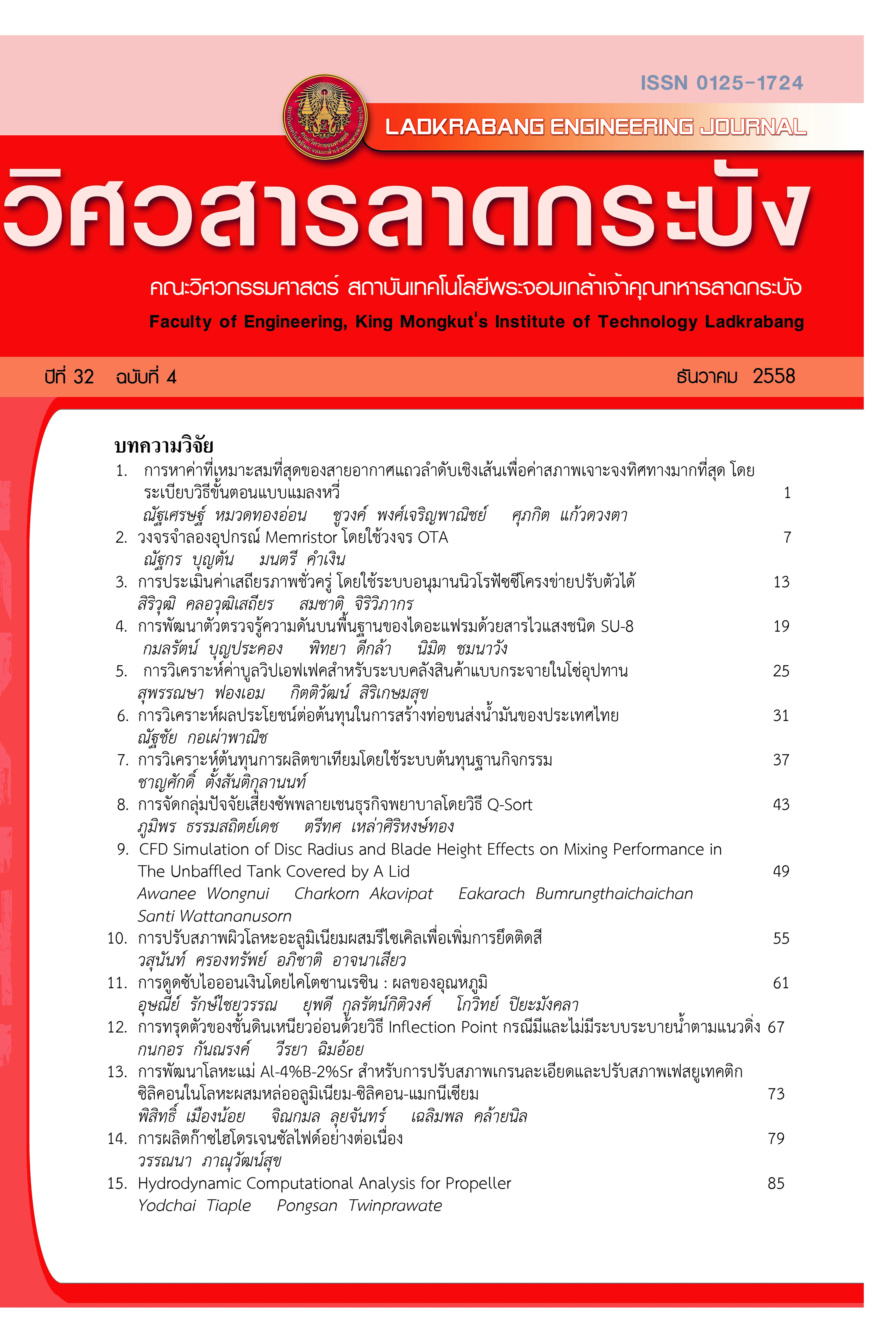Hydrodynamic Computational Analysis for Propeller
Keywords:
Marine propeller,, Openwater characteristics,, Hydrodynamics,, CFDAbstract
A propeller can hugely result in high fuel consumption efficiency for a boat. The study objective is to investigate hydrodynamic behaviour for designed propeller via three dimensional modelling. The propeller geometry is formed in three dimension by defining skew, pitch, chord, rake and thickness. These parameters are used to compute geometry at each radius of propeller in order to achieve hydrofoil section. Then, its performance is simulated by using computational fluid dynamics (CFD). The results can show openwater characteristic which is very important for selecting the operating point, propeller dimension and rotation at the high efficiency point.
References
[2] K. Hochkirch and V. Bertran, “Options for Fuel Saving for Ships”.
[3] G. Calcagno et al, “The INSEAN E779a Propellr Test Case: a Database for CFD Valiadtion”.
[4] J.L. Hess, and A.M.O. Smith, “Calculation of Non-lifting Potential Flow About Arbitrary 3-Diamensional Bodies”, Journal of Ship Research, 8(2), pp.22-44, 1964.
[5] J.S. Carlton, Marine propellers & propulsion, Butterworth-Heinemann Ltd, 1994.
[6] S. Phoemsapthawee, “Design of Marine Propeller Using Boundary Element Method”, Master Thesis, King’s Mongkut Instute Technology North Bangkok, 2001
[7] T. J. Chung, Computational fluid dynamics, Cambridge University Press, 2002.
[8] J. Kulczyk et al, “Analysis of Screw Propeller 5119 Using the Fluent System”, Archives civil and Mechanical Engineering Vol. VII No.4, 2007.
[9] H.R. Shin and J. Shitalkumar, “Computational Validation for Flow Around a Marine Propeller Using Unstrutured Mesh Based Navier-Stokes Solvers”, JSME International Journal, Series B, Vol.48, No.3, pp 562-570, 2005.
Downloads
Published
How to Cite
Issue
Section
License
The published articles are copyrighted by the School of Engineering, King Mongkut's Institute of Technology Ladkrabang.
The statements contained in each article in this academic journal are the personal opinions of each author and are not related to King Mongkut's Institute of Technology Ladkrabang and other faculty members in the institute.
Responsibility for all elements of each article belongs to each author; If there are any mistakes, each author is solely responsible for his own articles.






